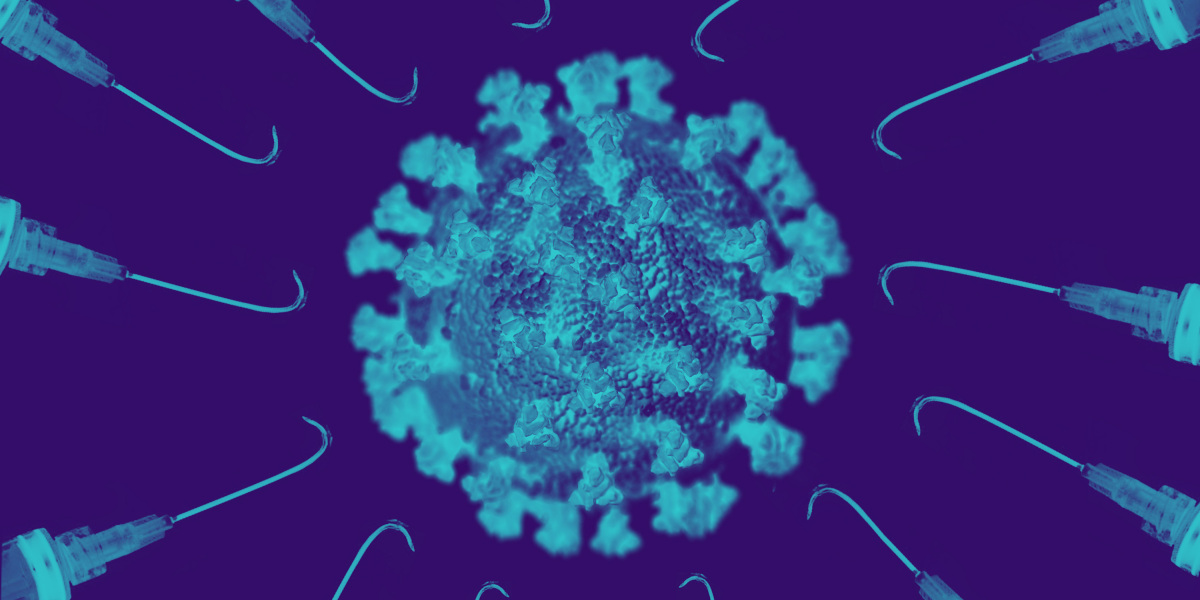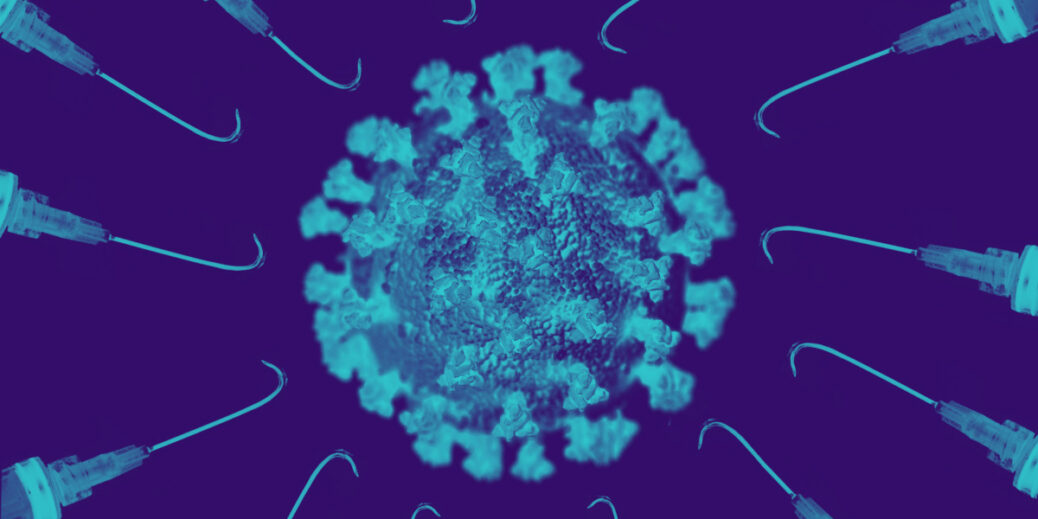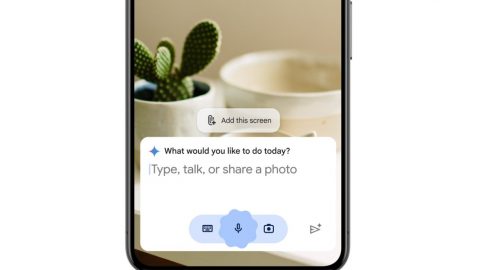
And when outbreaks do occur, the vaccines still provide good protection. A second CDC study examined an outbreak in a Kentucky nursing home where just half the staff were fully vaccinated. The outbreak, which began with an unvaccinated staff member, led to 46 covid-19 infections. Out of 71 vaccinated residents, 18 (25%) became infected, two were hospitalized, and one died. The staff fared better. Of the 56 vaccinated employees, four (7%) became infected. Most of those infections were asymptomatic. Only 6.3% of the residents and staff who had been vaccinated developed symptoms, compared with 32% of unvaccinated individuals.
During a nursing home outbreak, “staff and residents are continuously encountering the SARS-CoV-2 pathogen over and over again,” says Meagan Fitzpatrick, who models infectious diseases at the University of Maryland School of Medicine. So seeing such a small number of infections in this type of setting is encouraging.
Tracking the variants
New studies also hint that variants may be to blame for some of these breakthrough infections. Viral variants are “one of the wild cards,” said Anthony Fauci, chief medical advisor to the president of the United States, in a briefing on April 12. Though there is little real-world data, lab studies suggest that at least some of the variants are less susceptible to vaccine-induced antibodies than the original SARS-CoV-2.
In the Kentucky study, the researchers found that the outbreak was fueled by a variant known as R1, which had not previously been identified in the state. This virus had several important mutations that had also been identified in other variants. For example, the E484K mutation, also found in the B.1.351 variant first identified in South Africa, seems to help the virus evade the antibody response. And the D614G mutation might increase transmissibility. The authors note that although vaccination decreased the likelihood of infection and symptomatic disease, the virus still managed to infect more than a quarter of vaccinated residents and about 7% of the staff. That suggests the vaccine might not work as well against this variant, but the authors caution that the study was small. (The authors of the Chicago study didn’t sequence the virus.)
A New England Journal of Medicine study tracked infections in staff at Rockefeller University in New York. Between January 21 and March 17, the researchers tested 417 employees who had received a full course of the Pfizer or Moderna vaccine. Two women tested positive. When the researchers sequenced the viruses, they found that each was a slightly different variant, and these weren’t exact matches for any that had been previously identified.
One woman, for example, had a variant with mutations found in B.1.1.7, which originated in the UK, along with mutations common to B.1.526, which originated in New York City. “She had variants somewhere between the two,” says Robert Darnell, a physician and biochemist at Rockefeller and lead author of the study.
When a breakthrough infection occurs, the assumption is that the patient failed to mount a strong immune response to the vaccine, Darnell says. But that didn’t seem to be the case with this woman. Darnell managed to get a blood sample soon after she tested positive. He and his colleagues found high levels of antibodies able to neutralize SARS-CoV-2. Because she was newly infected, the antibody response was likely due to vaccination, not her recent infection. Antibodies take some time to develop.
Why her immune system didn’t protect her from infection isn’t entirely clear, but one possibility is that the variant managed to dodge her response. “For this particular patient, that’s probably the best explanation for what we saw,” says Stephen Kissler, an epidemiologist at of Harvard’s T.H. Chan School of Public Health. “It’s not surprising to me that a lot of these breakthrough infections that we’re seeing are from variants,” he adds. As more and more people get vaccinated, “there’s an evolutionary selection pressure that’s being applied.”
On the other hand, as more people get vaccinated, we’ll see fewer infections and the virus will have fewer opportunities to mutate. And Fitzpatrick points out that even if immune escape explains the woman’s infection, it’s just a single case. And there’s no evidence that she passed the infection to others who also had been vaccinated. The phenomenon is worthy of future studies, but “I don’t yet see this as alarming,” she says. “There’s not yet a public health crisis.”
And even when breakthrough infections occur, it doesn’t necessarily mean the vaccine has failed, says Monica Gandhi, an infectious disease doctor at the University of California, San Francisco. Antibodies are only part of the immune response. T cells play a huge role too, by ramping up other parts of the immune system and clearing out the virus once it has infiltrated the body. They don’t prevent infection, but they can curb the virus’s spread. And some research suggests that the body’s T cell response will be much tougher to evade. “You may actually get a mild infection, but hopefully you’ll still have protection against severe disease,” Gandhi says.
Still, it’s important to track breakthrough infections to look for unexpected changes. A rising number of infections in vaccinated people might mean waning immunity or the emergence of a new variant that can dodge the immune response. The vaccines might need to be tweaked, and we might need booster shots. But over time, “our bodies will develop a more complete immune response,” Kissler says. “And even if we do get reinfected, we’ll be protected from the most severe outcomes. In the long term, the outlook is good.”








Recent Comments